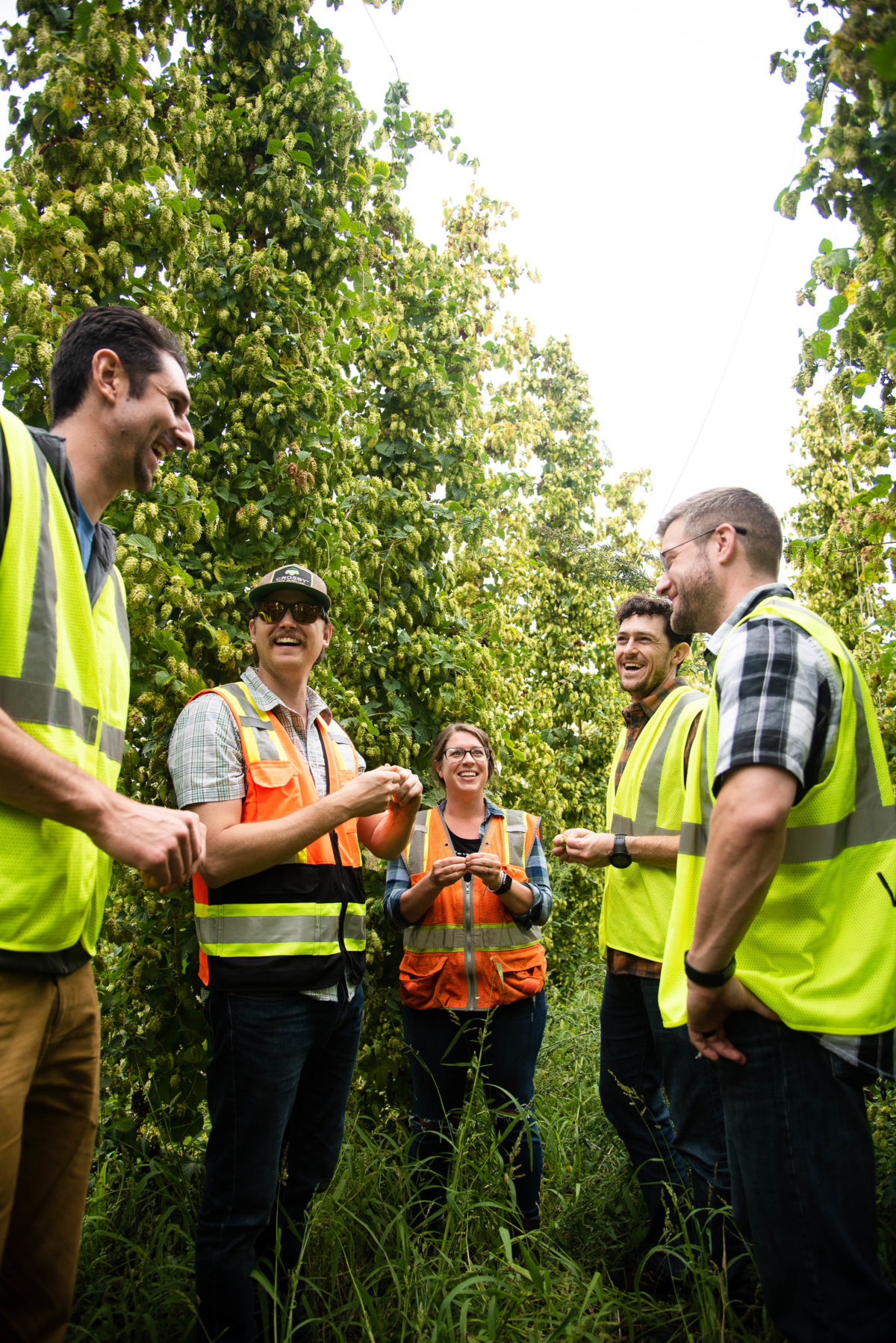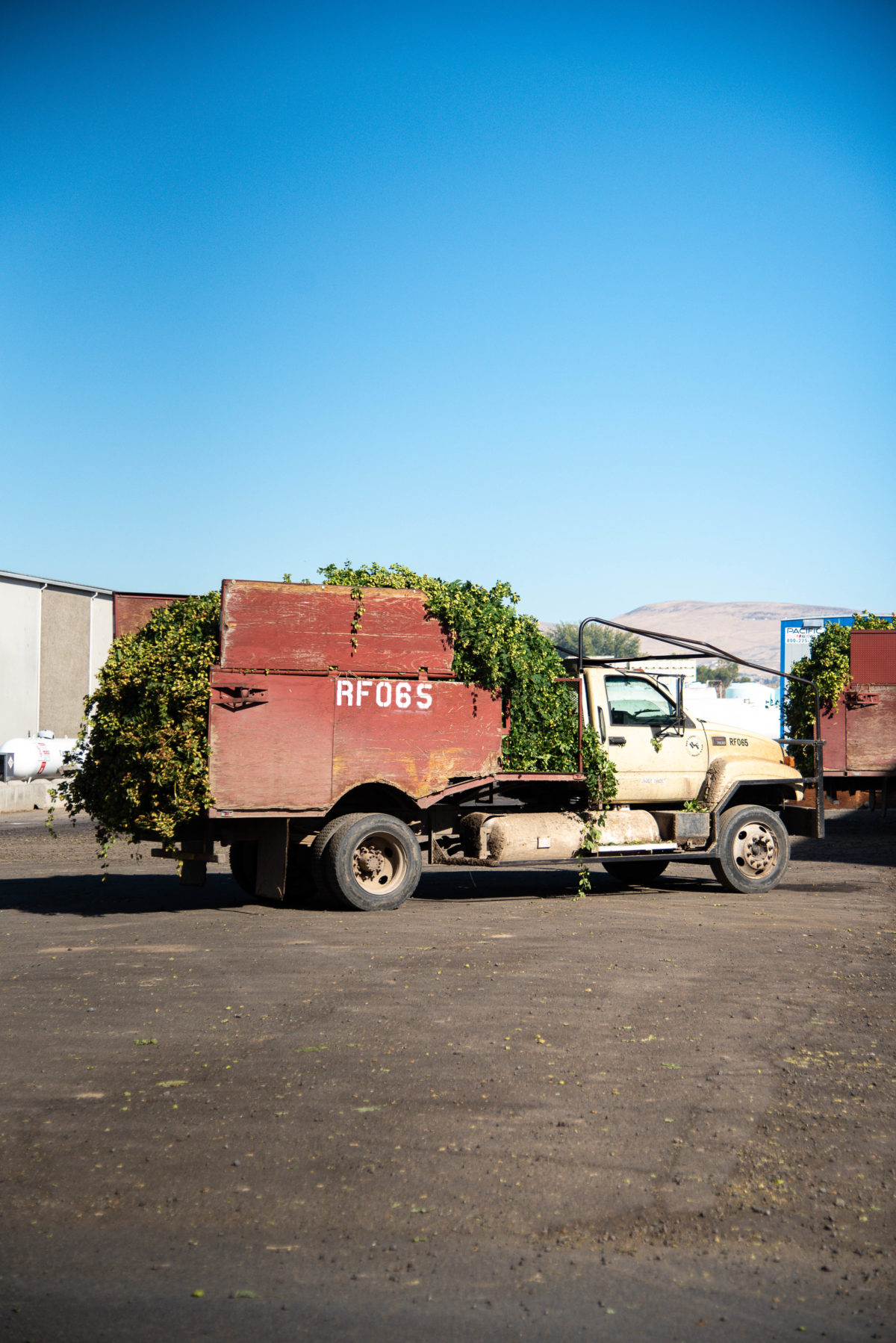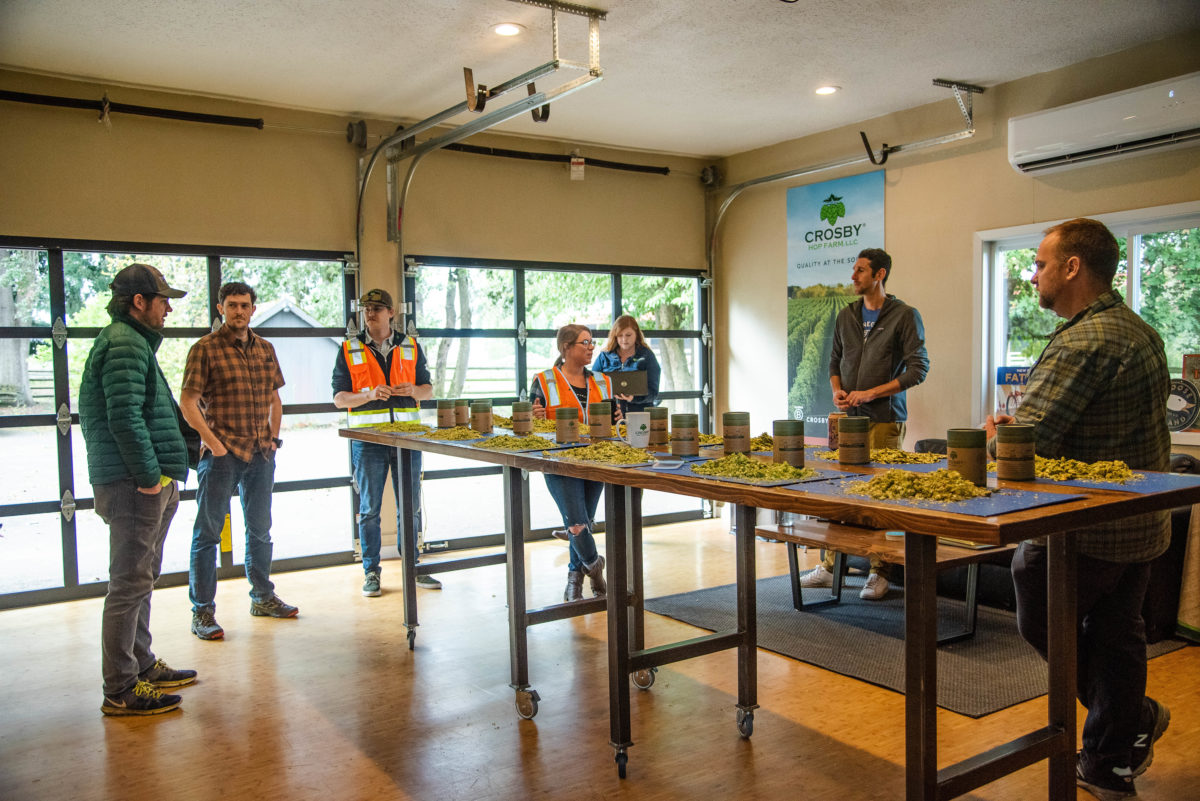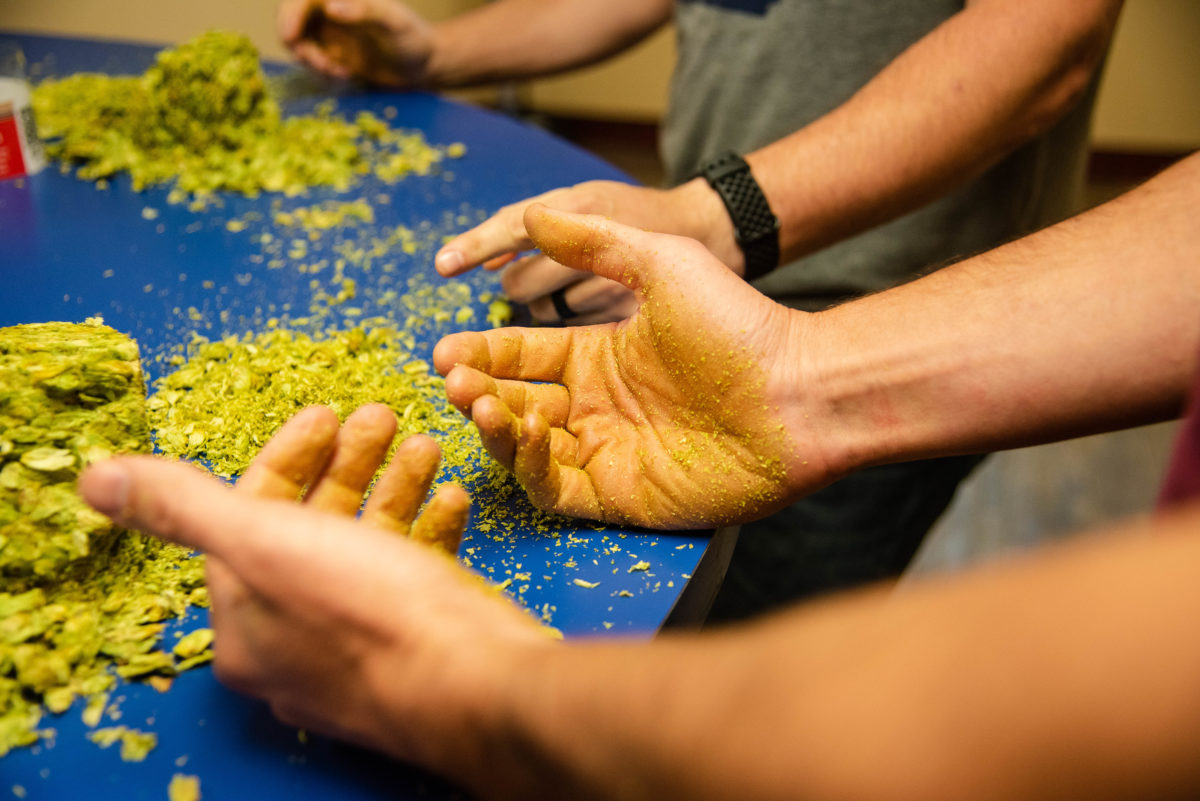Harvest Time
Yakima, WA is a high desert (located at 1,000 to 3,000 feet above sea level), generously fed by glacial runoff from the Cascade mountains yet very dry (receiving less than 6″ of rain annually), with hot days handing over to cool nights. Cold winters kill many pests and warm, dry days and cool nights provide a powerful growing environment for hops. The State of Washington produces 72% of the 107 million lbs (2018) of hops grown in the US annually and delivers a plethora of varietals (the top five being Citra, Cascade, Simcoe, Mosaic, and Zeus).
The size of an average hop farm is 450 acres and production varies by varietal (from 600-3,000 pounds per acre). Hops are planted in equidistant rows where they grow up 10-20 feet in the air, suspended by lines that run to a top wire. Hops grow vigorously, winding their way upward at a rate of 8-20 inches per week. Some varieties are squat and bushy with wild tendrils, others lean and symmetric. Each farm grows a handful of varieties of hops and either sells those hops directly to brewers on contract or sells them to brokers who work with brewers to facilitate the selection and supply chain process.
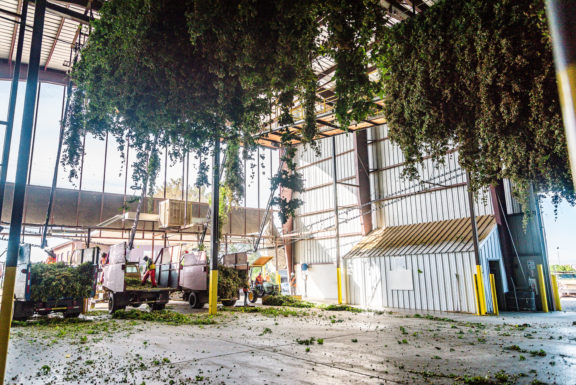
Hops are evaluated throughout their maturation cycle and as they mature into late summer, their moisture content drops and they’re harvested once moisture levels reach 8-10% and their alpha and beta acids and aromatic components have matured. Fields are harvested in lots of single varietals by cutting them down from the top wire and piling them into the back of trucks who pick up a ticket that details the lot harvested. These trucks drive the fresh hop vines back to a harvesting facility where one at a time bines are strung into a conveyor, then plucked off the vines by wires that move past mechanically knocking the hop cones off and allowing the vegetal matter to pass through to compost. Most harvesting facilities resemble a Rube Goldberg machine with conveyors maneuvering hops and vegetal matter in many directions. Out of the harvesting facility runs a conveyor that ferries the hops to the kiln where massive heaters toast the hops slowly to reduce moisture content further as they are prepared for processing. The steam rising from hop kilns is an intensely aromatic mist, infusing the air with tropical, citrus, and floral aromas.
Once dry, hops are ferried from the kiln on another conveyer and either dumped into massive hop mountains by lot (to be selected by brewers) or pressed into 200 pound rectangles called bales that are wrapped in burlap and sent on flatbed trucks to refrigerated storage or directly to the hammer mill which turns whole hops into pellets. Hops are very fragile at this stage and are held cold as they await their pelletization appointment. Once pelletized, hops will remain cold in vacuum packed, nitrogen sealed bags until use in brewing.

As millions of pounds of hops are harvested in a narrow two-month window and teams work around the clock picking, drying, baling and pelletizing, innovation happens at a much slower pace in fields. Hops are bred for characteristics that are appealing, or they pop up unannounced and happen to have an intriguing aroma. These experimental varieties are planted in fields, 7 plants between poles, and first evaluated for their ability to grow, then on their agronomic and aromatic prospects––if they produce enough to be worthwhile and their aroma is compelling, then it’s likely they’ll be replanted the following year and acreage can expand subsequently.
During this harvest season, our focus is on selecting the finest hops for our existing beers, but we are also ever on the lookout for new varieties that catch our nose––a few this year that had our eyebrows raised were Experimental #692 and #016. More to come in time…


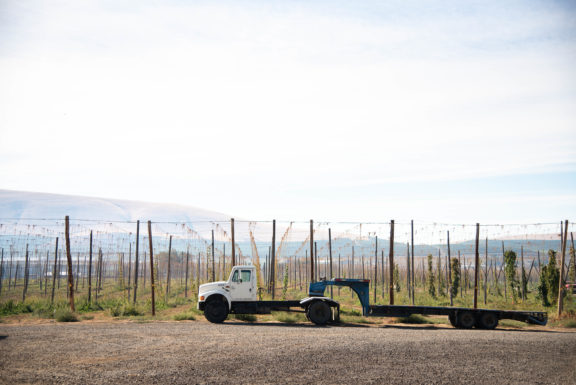
Reap What you Sniff
After the hops have been picked, kilned and baled, we analyze specific lots of hop varietals and select our favorites that best express what we’re looking for. These “brewers cuts” come from specific lots in specific farms in volumes that will cover the amounts we have contracted for the coming year. As we “rub” these hops, the action of grinding the hops between your palms releases aromatic oils, compounds and terpenes and each lot is then analyzed for its specific aromatic characteristics.
After much deliberation, sniffing, rubbing, and repeating, we select a favorite, or will sometimes blend lots with complementary character that gives us more cohesive hop character and intensity. Most of the hops we select are grown in Washington and Oregon, but there are a growing number of varieties being successfully grown in Idaho over the last few years.
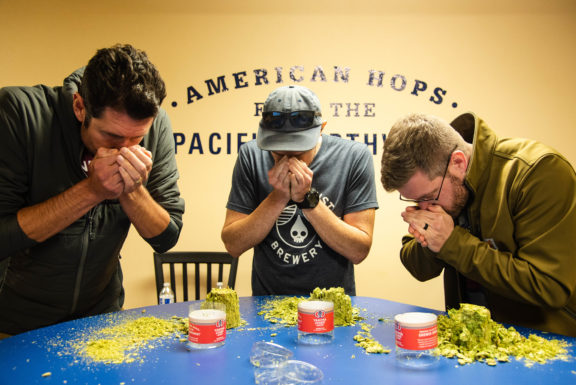
More than half of the hops we contract each year go into Truth IPA. Each hop in Truth plays a critical role in the flavor and aroma of the finished beer and we select each for specific characteristics. We select Citra for its intense citrus, orange and tropical fruit character; Amarillo for its peach, grapefruit and tropical notes; Centennial for high notes of citrus and bright lime; Simcoe for tropical and dank base notes. These come together to create the intensely tropical, citrus, grapefruit and mango aromatics that make Truth what it is.
Til Next Time
We always leave harvest a bit spellbound by the vast complexity and the intense logistics, process and raw human effort that brings hops from vine to pellet ready for use in a matter of hours. Thank you Crosby Farms, Yakima Chief, B.T. Haas, Roy Farms and many of the farms we selected. It was another amazing year and we’re very excited to see these hops express their terroir into our beer over the next year.
